Russ Douglas checks out two very different cutting-edge thermal sights - the IRay XHolo-HL13 Thermal Sight and the Saim SCT35 Thermal scope
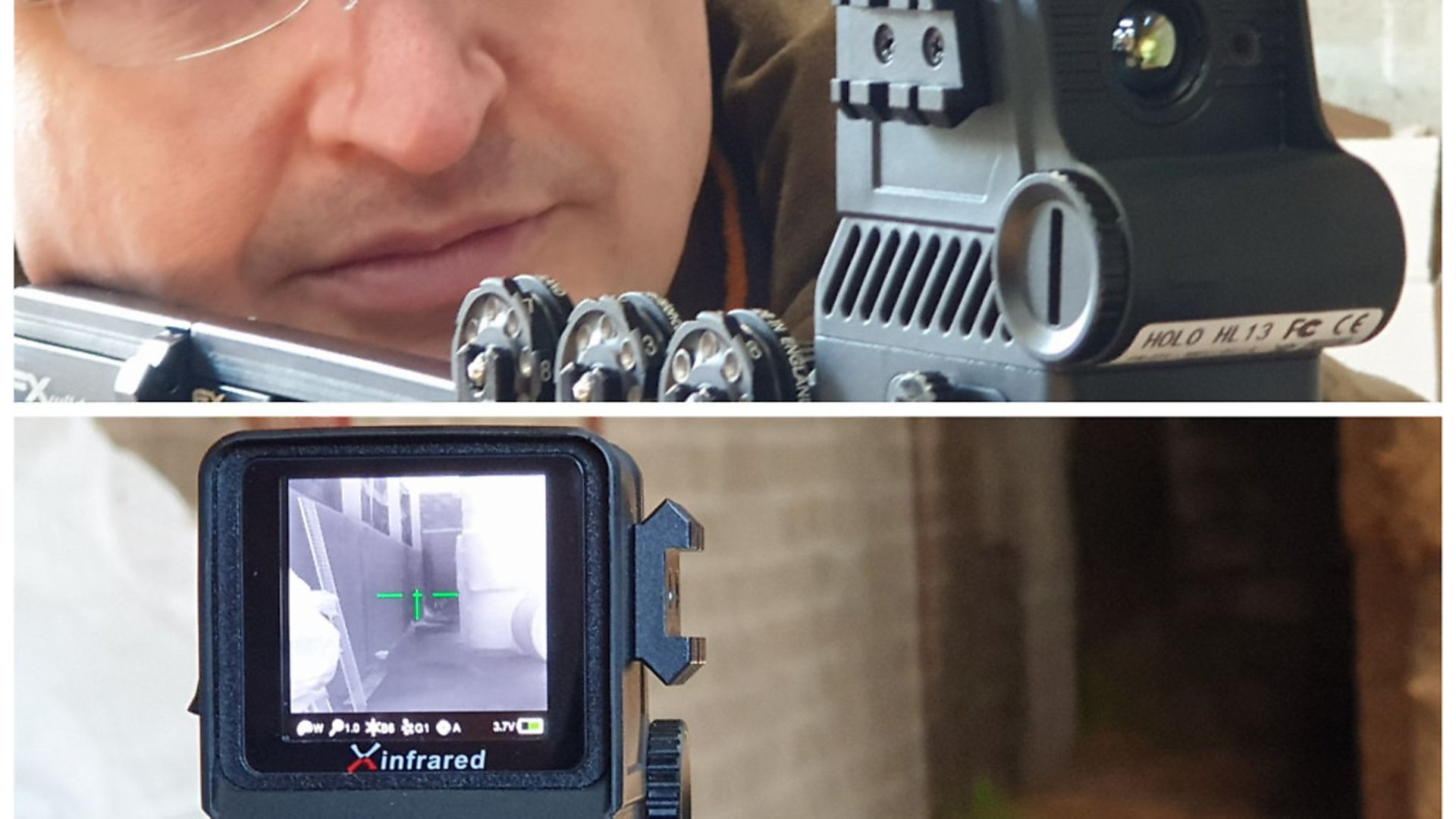 credit: Archant
credit: Archant
Thermal spotters and scopes are simply never cheap, but they’re usually game-changing for us pest controllers. The improved efficiency to spot live prey rapidly, in most conditions, without having to scan back and forth looking for tell-tale eye shine, where projected infrared light reflects back to night-vision devices can’t be overstated. Thermal’s not perfect; it can’t see through objects in the way like grass, but it can show you where prey has recently been! I’ve looked for rats in barns and seen tell-tale heat patches – thermal signatures – in areas showing where a rat had obviously moved on moments, or even minutes earlier. Plus, I’ve curiously checked out tiny glowing dots in rat thoroughfares and been amazed to discover fresh rat jobbies, which show up via thermal like tiny light bulbs!
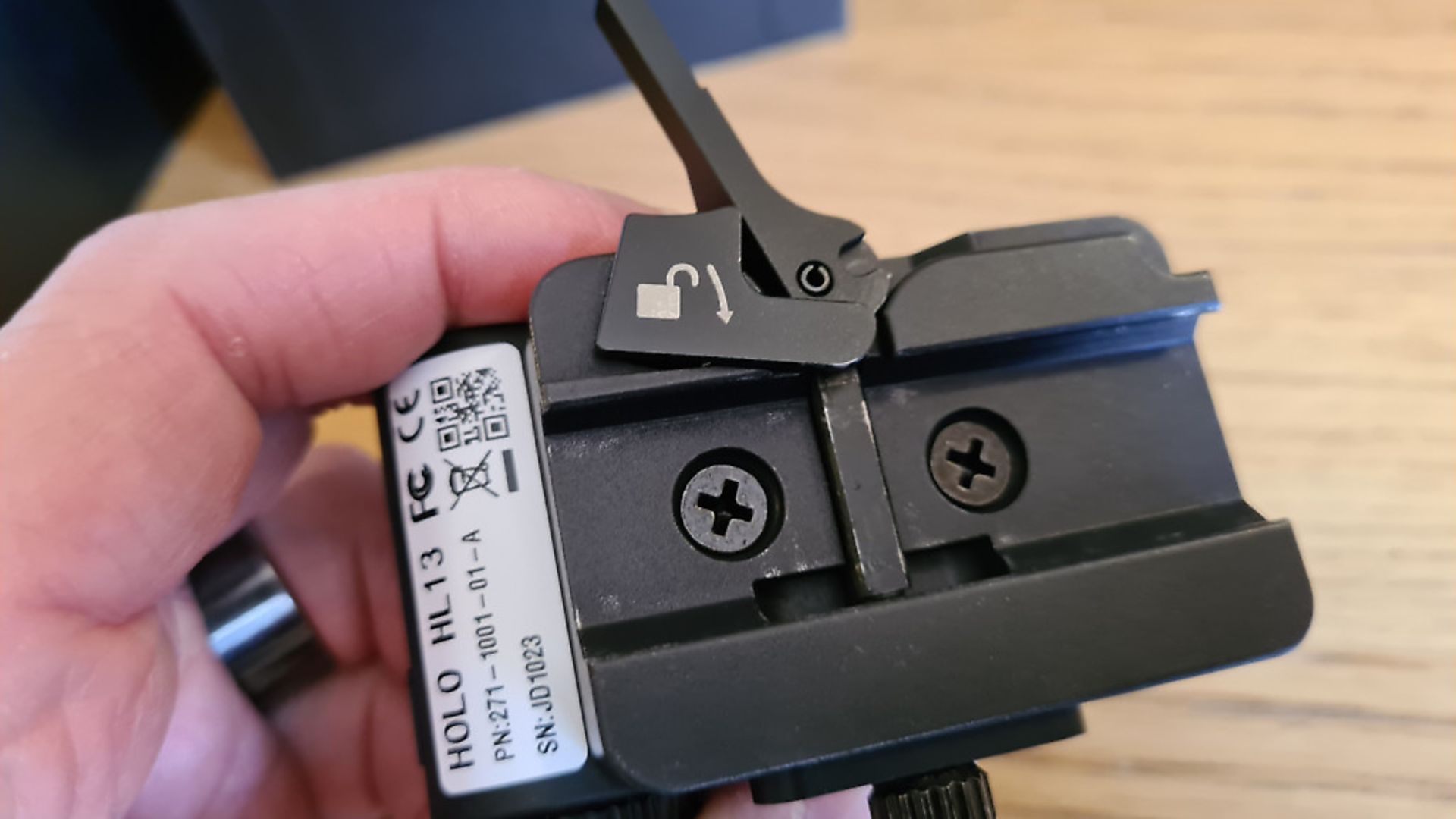 credit: Archant
credit: Archant
Two different ends of the scale
I was recently very fortunate to check-out the two thermal sights I’d been keen to try all year, thanks to Cliff Ray of OpticalSolutions.uk. He’d previously loaned me the SAIM SCL35, a rifle scope that can also function as a spotter, with Picatinny rail adapter detached, which I’d featured in a four-part video review on my channel back in spring. This is an amazing piece of kit, so compact yet crammed full of the latest technology including revolutionary ‘Ultraclear mode’ – more on that in a minute – but whilst it was an amazing spotter, I felt it was let down slightly as a rifle scope by a few issues with reticle choices and reticle clarity. All that has been dispelled in the release of the newer SCT35, but when choosing thermal, you really must try them hands-on because the image quality of some cannot fail to impress.
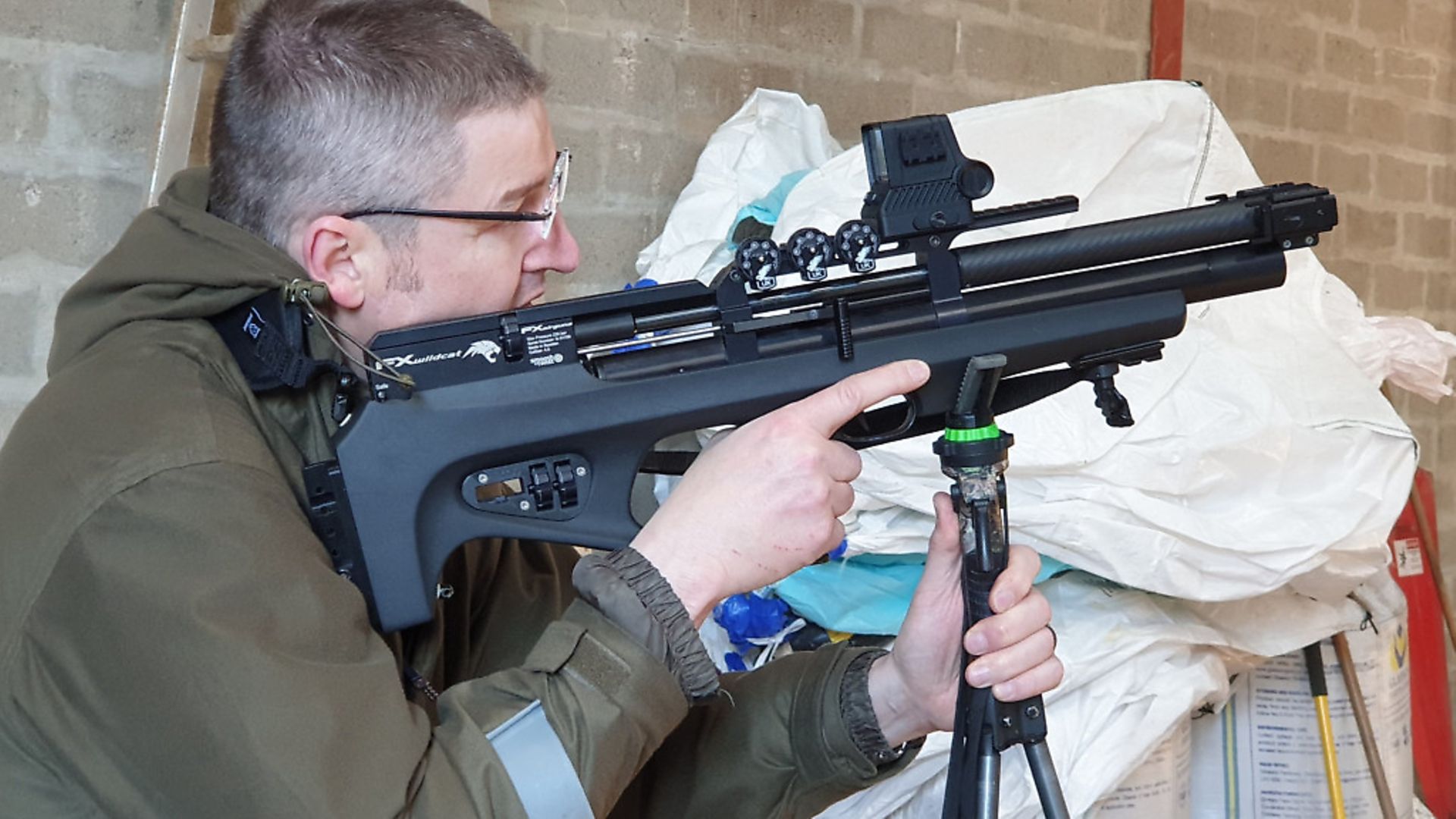 credit: Archant
credit: Archant
Thermal scope 101
For those like me, relatively newcomers to thermal scopes, let me explain a few basics. All thermal devices have an inherent advantage over night-vision devices, in that no infrared illumination is required, making them truly passive, so for any ‘lamp-shy’ prey, there’s nothing to give away your position. A disadvantage is that you cannot magnify the incoming thermal radiation via conventional lenses, which gives conventional scopes great magnified clarity. You have an expensive one-piece Germanium objective lens, providing initial base magnification and focusing the incoming thermal radiation on the sensor – and that’s it. Hence, all magnification beyond the objective lens is digital and at the mercy of pixilation, although as you’ll hear, having the latest ingenious software can help massively with this.
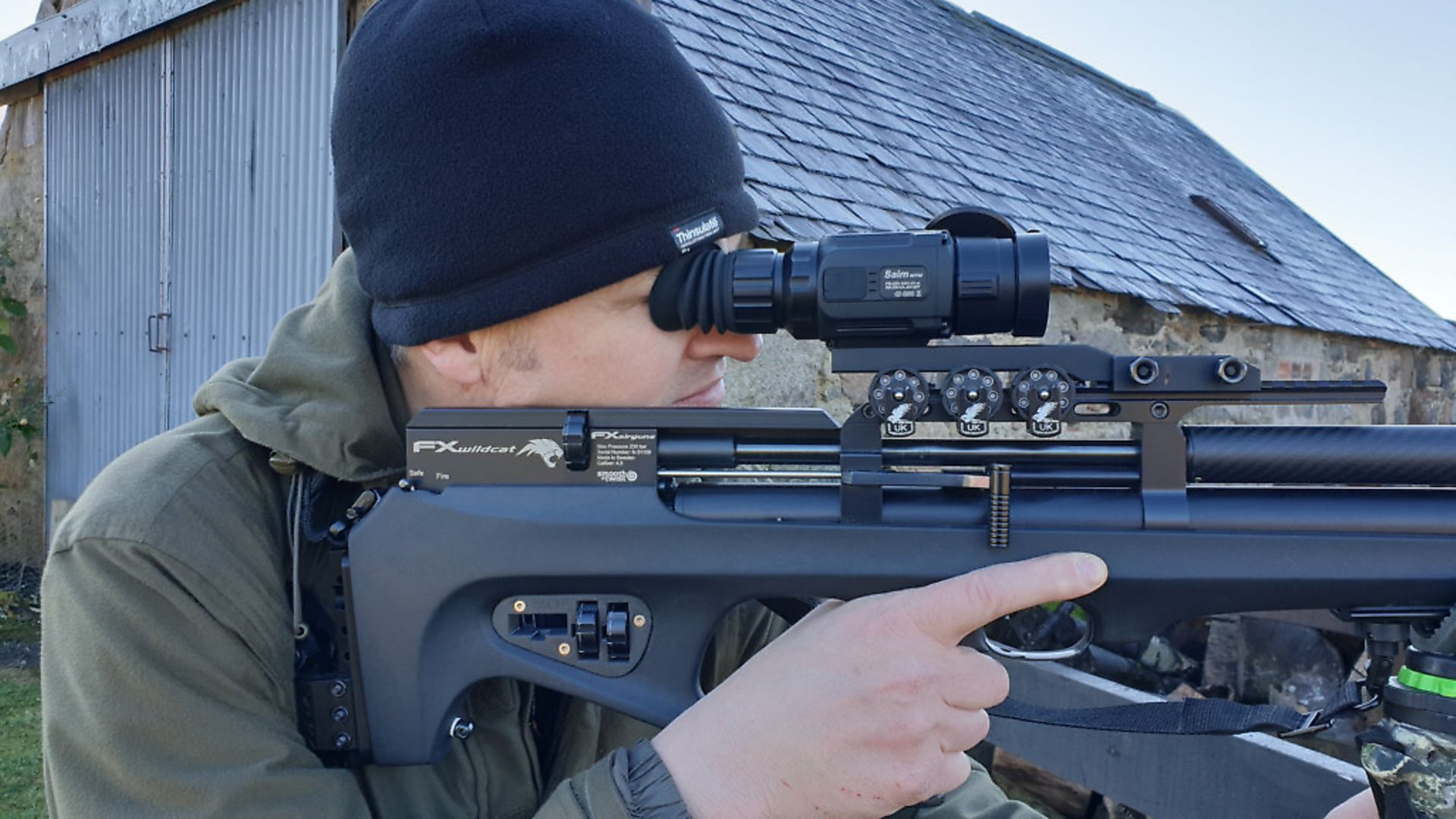 credit: Archant
credit: Archant
Crucial factors
Unlike optical scopes, thermals have always had two crucial factors; the objective lens diameter, which determines base magnification, and the size of the thermal sensor – both pixel size and number of pixels in the array. SAIM have brought a third feature into play, namely some ground-breaking electronic processing technology, to help hunters get more bang for their buck in real-world conditions. The very best thermal sensors are those used by the military, but they’re simply not available to the civilian market, plus they’d be prohibitively expensive if they were. Individual sensors are measured in microns, with 17 micron and more recently, 12 micron being used. These sensors are arranged in arrays, e.g. 256 x 192 or 320 x 280, then 384 x 288 being the most common, although higher-spec’ kit now has sensor arrays measuring 640 x 480.
 credit: Archant
credit: Archant
The stunning HL13
I chatted to Cliff at his iRay stand at the British Shooting Show in February, where I first got to see and handle the almost impossibly small XHolo HL13 sight. This diminutive but very well-engineered marvel has the look of a compact red-dot sight with a stunning 1.63inch colour AMOLED screen, yet contains some of the latest thermal technology. It’s as far from a traditional scope shape as you can get, and yet contains all the functionality of much larger thermal scopes – for me, only missing a recording facility. Weighing just 251g/9.1oz including battery and secure mount, and measuring 60mm x 80mm x 75mm, there seems almost nothing to it. Yet it includes all the functionality of any thermal scope, obviously minus the eyepiece/display focus.
 credit: Archant
credit: Archant
Packed with features
This marvel is amazing; literally palm-sized, but packed with features. It makes an incredibly handy spotter, but includes a built-in Picatinny rail with a recoil arrestor stud, safety catch protected dismounting latch and very positive ratchet for adjusting the grip. With everything so well designed and engineered, you can be sure it’ll go nowhere once rifle-mounted. Two protruding rubber buttons control everything; the right one is the on-off – it powers-up almost instantly – and the left is essentially a miniature five-way joystick. Pressing this, toggles between two on-screen pictogram-based menus, each giving four options (up/down/left/right), which are then selected by a nudge of the joystick. Out of the menu, nudging the button up toggles between 1x, 2x, 3x and 4x digital zoom. At every stage, a slim indicator bar beneath the screen displays; the colour palette in use, the current zoom, brightness level, zero profile, if the recalibration is automatic or manual, plus whether the laser is on, and the remaining battery life.
 credit: Archant
credit: Archant
Point and shoot laser
Did I say laser? Yep, beside the front-facing 13mm lens is a small aperture from which a visible red laser is emitted, for real heads-up snap-shooting. When on, there’s a typical asterisk ‘ * ‘ laser indicator symbol on the function bar, plus a small circle appears around the centre of whichever reticle is in use, as an unmissable reminder. That’s right, there are four reticle choices – cross, T-shape, bracketed dot or blank – and each design is available in four colours; white, black, red or green, plus there are four saveable profiles, accommodating zeroing at different ranges or power levels, for example. The HL13 is powered by either a rechargeable 3.7v CR123 battery, or a 3v non-rechargeable (life 3hrs). You select which is in use via the menu to get an accurate measure of remaining power. The battery compartment cap has ribbed edges and a coin slot too – an excellent design, missing nothing out.
 credit: Archant
credit: Archant
Limitations
The HL13 is very much a ‘point and shoot’ sight, intended for short-range use. Its limitations are the diminutive screen, which I wore my reading glasses to use close-up with my rifle shouldered, plus the zeroing menu shows one graduation at 50m being 6.54cm (equivalent to 13mm at 10m). So, not a sight for medium-to-long range, although it could spot rabbits moving through long grass terrain at well over 100m. You could only head-shoot prey at shorter ranges when zoomed, but full-bore fox-controller Bruce’s honest instant reaction was ‘this makes me want to go ratting!’
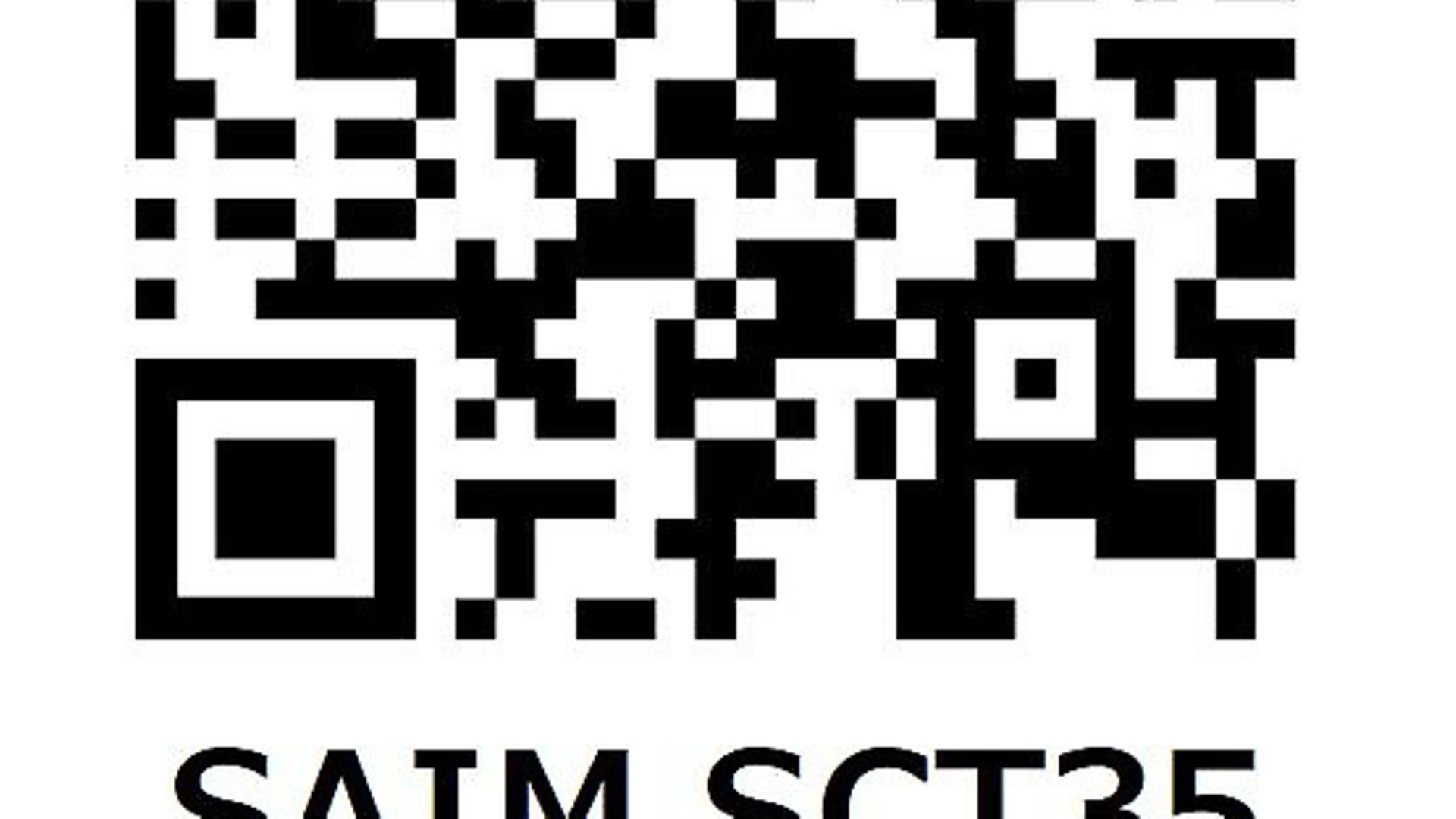 credit: Archant
credit: Archant
Top of the range
By contrast, the range-topping SCT35 thermal scope from SAIM is one ‘compact yet stunning’ techno-marvel. With a 35mm lens giving a base mag’ of almost 3x, plus four levels of digital zoom, it’s an impressive medium-range scope. The compact dimensions (195mm x 60mm x 60mm) and weight (420g without batteries) are misleading because this device contains some impressive features. The Picatinny mounting adaptor attaches via two steel screws, into brass inserts set into the synthetic body. Don’t let that fool you into thinking this isn’t well-made; I’ve seen photos of protruding (glued) steel screws that sheared off before the unit itself presented any weakness.
 credit: Archant
credit: Archant
Straightforward interfaces
There are standard ribbed rings for adjusting both dioptre and objective focus, a secure battery compartment cap, retained by a lanyard, a USB-C socket protected by a rubber cap, and three control buttons. These are P (power), M (menu, short and long) and C (camera); simply press M and C together to force calibration so that it doesn’t interrupt a shot. The USB-C allows an external power supply or downloading of the 8GB internal memory. Just like the SCL35, a quick press of the central M pulls up the double-decker Pictogram-based quick menu, where P and C then intuitively control the upper or lower sequential options of zoom and brightness, image mode and sharpness, or reticle designs and colours. A longer press of M pulls up the full menu, from which you can enable ‘Ultraclear Mode’, WiFi, automatic shutter (recalibration), Video Out, Picture-in-Picture (PIP), digital compass, selection of battery type, four zeroing profiles, or ‘more’. Choosing that last option lets you access the zeroing menu, defective pixel repair, compass calibration, system information and reset options.
 credit: Archant
credit: Archant
Condition-dependent no more
Back to that ‘Ultraclear Mode’; one thing that regularly kills all thermal imagers is bad conditions. When there’s cold wet fog hanging in the air, thermal radiation just can’t get through. Aberdeenshire’s haar – cold sea fog – is typical and thwarts even the most expensive thermal kit. I mentioned earlier that SAIM had a trick up their sleeve, and there’s a prominent main menu option in the SCT35, Ultraclear Mode. Bruce has previously described activating this in otherwise thermal-killing conditions as ‘like opening the curtains’, turning an indistinct mess into something relatively clear and perfectly usable. This goes to show that there’s some very clever processing technology at work when these conditions render most thermal devices useless.
Fit for purpose
Any previous issues with reticle visibility have gone, plus the on-board recording functioned flawlessly throughout. I was hampered during range testing by limitations of our club’s necessary CV19 precautions, so range time was limited, and I couldn’t pop downrange to pre-heat any steel targets for zeroing. This didn’t matter, though, because I was able to spot the brief ‘flashes’ of thermal impact from pellets downrange on the steel targets, which allowed me to zero right out to 30m with no issues.
Horses for courses
If you live in an area beset by bad thermal conditions, you should seriously consider SAIM for thermal scopes. Cliff will happily arrange in-person demonstrations comparing different devices should you want to see for yourself, which speaks volumes for his confidence in the SAIM technology. Inconveniently, Aberdeen’s inclement weather didn’t show itself during the few days I was testing the SCT35, so I couldn’t record this improvement for you to see for yourselves, but the graduated depth of shading of the SCT35’s image when viewing both livestock and vermin, together with background clarity out to considerable distance, showed that this is clearly very impressive technology, and all whilst being amazingly compact and lightweight, which as you know means a lot to those of us struggling with our mobility.
White-hot, or black-hot?
Thermal scopes have numerous modes from monochrome to red, or psychedelic rainbow effects. I always assumed black-hot was literally the direct negative of white-hot, and have always staunchly preferred using white-hot. It simply seemed more natural and instinctive to me, to see a warm object literally ‘light up’ in the thermal display. When using black-hot, my subconscious can’t help associating darkness with shadowy nooks and crannies. This thinking was really challenged whilst reviewing these two scopes, after Bruce recorded footage clearly showing livestock in a field was more clearly visible via ‘black-hot’. This was confirmed during our video review from his garage (man cave), when even tree branch details were significantly clearer at 150+m via black-hot than white-hot; more detail was clearly visible. My own thermal spotter doesn’t have anything like the image quality of the SCT35, but in future, when reviewing thermal kit I’ll definitely be trying black-hot first and will just have to reprogram my own instincts because the results spoke for themselves.
Conclusions
The only downside I could see to the SCT35 was that it took up to 12 seconds to power-up – otherwise it’s absolutely incredible. Thanks very much to Cliff Ray for the loan of these amazing sights, and to my buddy, Ken, for the socially-distanced help with photographs on two of my permissions.
Kit used
IRay XHolo-HL13 Thermal Sight: £1,375
Saim SCT35 Thermal scope: £2,595
Optical Solutions
UK Night Vision forum, Thermal section
New Thermal Hunting forum https://www.thermalhuntingforum.com/index.php